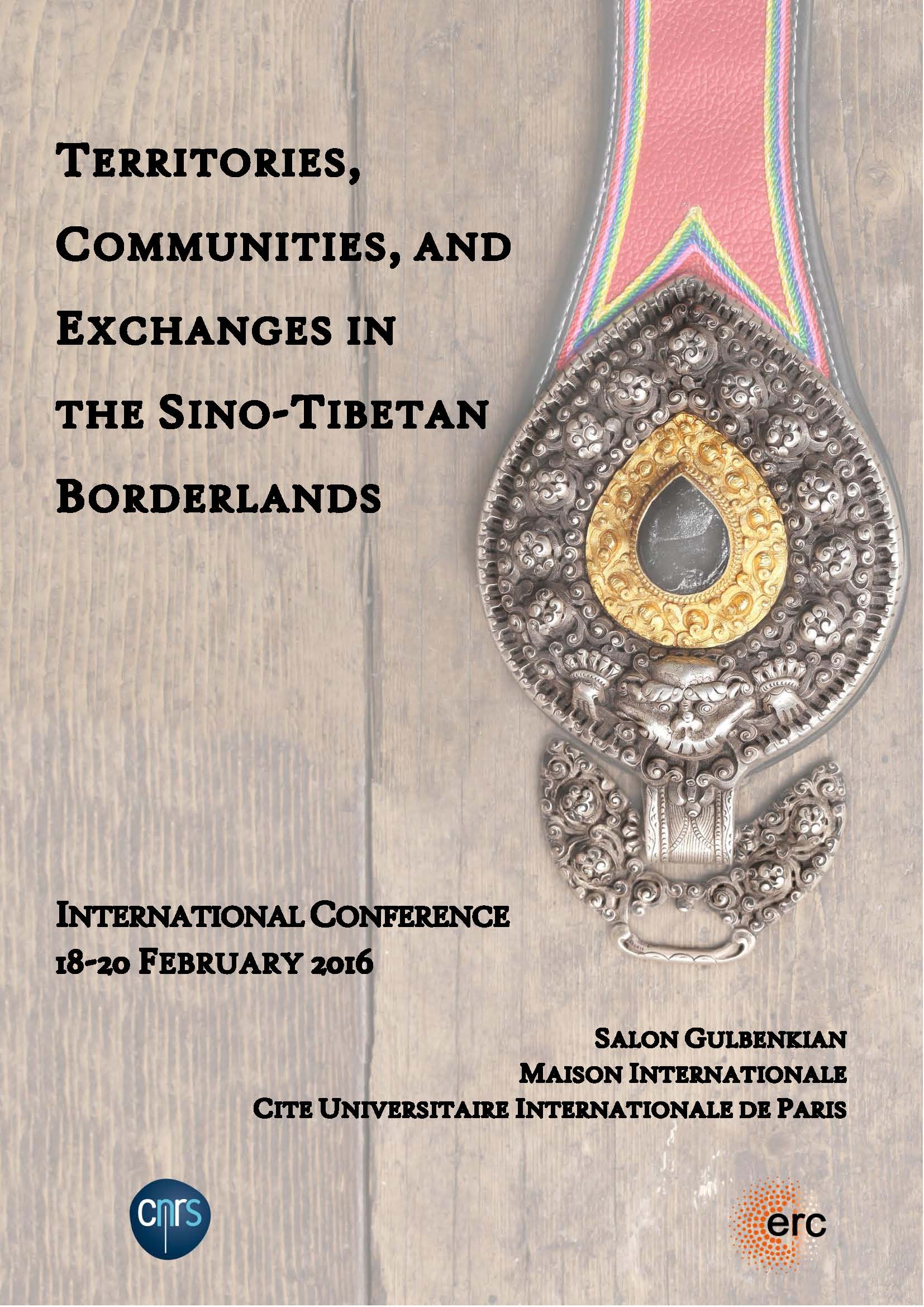Notice
Stéphane Gros (Centre National de la Recherche Scientifique), "Matrifocality and the House in Drapa (Zhaba)"
- document 1 document 2 document 3
- niveau 1 niveau 2 niveau 3
Descriptif
The practice of a non-contractual, nonobligatory, and nonexclusive visiting sexual system among a matrilineal group in Southwest China has generated as much interest in anthropology as in the mass media. The Na (or Moso) who live on the border between Yunnan and Sichuan (near Lake Lugu) have come to be regarded internationally as an unusual case in the ethnography of the region. The Na case, though a striking example of a matrilineal system in an overall regional patrilineal environment, is not unique. These cases have to be considered from a cross-regional perspective and across contemporary ethnic boundaries. In Drapa (Zhaba), a valley south of Ta'u (Daofu) in Kardze Prefecture, a significant number of local Tibetan inhabitants still practice a form of visiting system. The visiting system which is associated with the uxorilocal residence for offspring from a non-contractual sexual relationship has so far been described as a form of union based on a matrilineal rule of descent. Using data that was collected during fieldwork conducted mainly in five different villages in the Drapa valley, this paper demonstrates that, while matrilineality prevails, the visiting system is not necessarily dependent on the respect of the matrilineal descent rule. The prime factor to be taken into consideration here is the importance of maintaining some continuity in the household. It can be said Drapa society is a matrifocal, household-oriented society in which most people play no social roles other than their kinship ones, and where the household is their only basic social affiliation. The matrifocal principle, when understood in combination with the household-centric orientation, should also be considered as a more general set of ideas with regards the house as a more complex set of relations that linked together the building, the household members, and forces associated with them, such as fortune, luck, prosperity, etc.
International conference “Territories, Communities, and Exchanges in the Sino-Tibetan Kham Borderlands,” Februray 18-20, 2016. This conference is an outcome of a collaborative ERC-funded research project (Starting grant no. 283870). For more information, please visit the project's Website: http://kham.cnrs.fr
Dans la même collection
-
C. Pat Giersch (Wellesley College), "Patterns of Inclusion and Exclusion Along Twentieth-Century Ch…
In recent years, increasingly sophisticated work has traced the remarkable changes in early twentieth-century state-building along China's southwestern and Tibetan borderlands. During this same period
-
Lucia Galli (University of Oxford), "The Price of Enlightenment: The Travel Account of Kha stag ʼDz…
Frontier territories characterised by intense socio-economic, political, and cultural inter-actions, in the mid-nineteenth century the easternmost fringes of the Tibetan plateau saw the rise of the
-
John Bray, "French Catholic Missions and Sino-Tibetan Trade: Local Networks and International Enter…
The Missions Étrangères de Paris (MEP) sent their first missionary on an exploratory mission to the Sino-Tibetan borderlands in 1847, and they retained a presence in the region until 1952. Together
-
Tenzin Jinba (National University of Singapore), " Two Gyalrong Weddings Under Fire: Rethinking of …
Two weddings in 2009 and 2015 respectively have received wide publicity among Tibetans and others within and out of China. The first was that of Lobsang Dundrup, a renowned singer from Gyalrong, and
-
Katia Buffetrille (Ecole Pratique des Hautes Etudes), " The Increasing Visibility of the Borderland…
For centuries, Central Tibet and its capital Lhasa were regarded as the center—as is obviously expressed in the very name of the region in Tibetan, dBus, “Center”—of political and religious life in
-
Scott Relyea (Hamline University), " Settling Authority: Sichuanese Farmers in Early Twentieth Cent…
From 1907 to 1911, some 4,000 commoners from the Sichuan Basin ventured west. Enticed by promises of large tracts of uncultivated land and three years of free rent, seeds, animals, and farm implements
-
Dawa Drolma (Bay Path University), " The Renaissance of Traditional Dzongsar Craft-making in the Me…
As a member of a deeply-rooted traditional craft-making family in the Meshö (Sman Shod) Valley of Kham region, I will present the results of my ongoing fieldwork and academic study on the renaissance
-
Dáša Mortensen (University of North Carolina at Chapel Hill), " Wangchuk Tempa and the Control of G…
This paper examines the fascinating life of Wangchuk Tempa 汪学鼎 (1886-1961), the de facto early-twentieth-century political and military leader of Gyalthang (rGyal Thang) in southern Kham, in order to
-
Yudru Tsomu (Sichuan University), " Rise of a Political Strongman in Dergé in the Early Twentieth C…
This paper discuses rivalry for the throne of Dergé between 1890 and 1940. In the late nineteenth and early twentieth centuries, internecine feuds created a power vacuum serious enough to invite
-
Mark Frank, " Chinese Physiocracy: Kham as Laboratory for the Agrarian Theory of China "
When a nation-state looks to intensive agriculture for its national essence, what are the implications at the local level? This paper looks at agricultural colonization efforts (tunken屯垦) of the
-
Chen Bo (Sichuan University), “House Society” Revisited "
In this paper, I will begin by considering the concept of “house society” and its applicability to Southwest China. I ask the question of why no scholar, Levi-Strauss included since he originally
-
Eric Mortensen (Guilford College)," Boundaries of the Borderlands : Mapping Gyalthang"
This project seeks to discern the physical and conceptual boundaries of the Tibetan region of Gyalthang, in southern Kham. At issue are questions about the relationships between older
Avec les mêmes intervenants et intervenantes
-
Stephane Gros : Kham Project : Territories, Communities, Exchanges in the Sino-Tibetan Kham Borderl…
GrosStéphaneStéphane Gros est un ethnologue spécialiste des minorités ethniques de la Chine du sud-ouest et des régions frontalières sino-tibétaines. Il a été chercheur principal et coordinateur d’un projet
-
Introduction par Stéphane Gros, Workshop: "Territories, communities, and exchange in Kham Sino - Ti…
GrosStéphaneIntroduction par Stéphane Gros Workshop: "Territories, communities, and exchange in Kham Sino - Tibetan Borderlands 25 juin 2013"
-
-

















